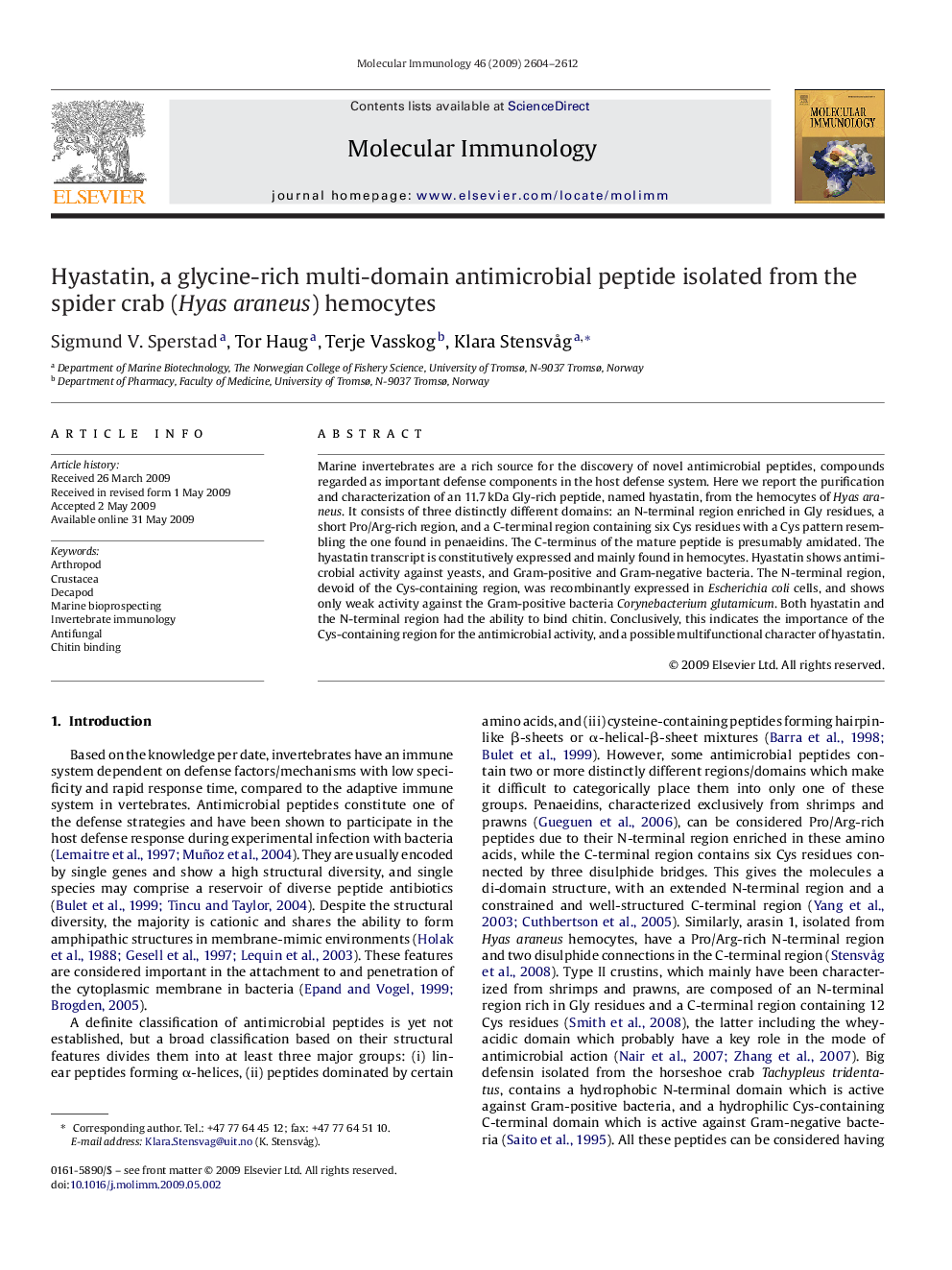| Article ID | Journal | Published Year | Pages | File Type |
|---|---|---|---|---|
| 2831401 | Molecular Immunology | 2009 | 9 Pages |
Marine invertebrates are a rich source for the discovery of novel antimicrobial peptides, compounds regarded as important defense components in the host defense system. Here we report the purification and characterization of an 11.7 kDa Gly-rich peptide, named hyastatin, from the hemocytes of Hyas araneus. It consists of three distinctly different domains: an N-terminal region enriched in Gly residues, a short Pro/Arg-rich region, and a C-terminal region containing six Cys residues with a Cys pattern resembling the one found in penaeidins. The C-terminus of the mature peptide is presumably amidated. The hyastatin transcript is constitutively expressed and mainly found in hemocytes. Hyastatin shows antimicrobial activity against yeasts, and Gram-positive and Gram-negative bacteria. The N-terminal region, devoid of the Cys-containing region, was recombinantly expressed in Escherichia coli cells, and shows only weak activity against the Gram-positive bacteria Corynebacterium glutamicum. Both hyastatin and the N-terminal region had the ability to bind chitin. Conclusively, this indicates the importance of the Cys-containing region for the antimicrobial activity, and a possible multifunctional character of hyastatin.
